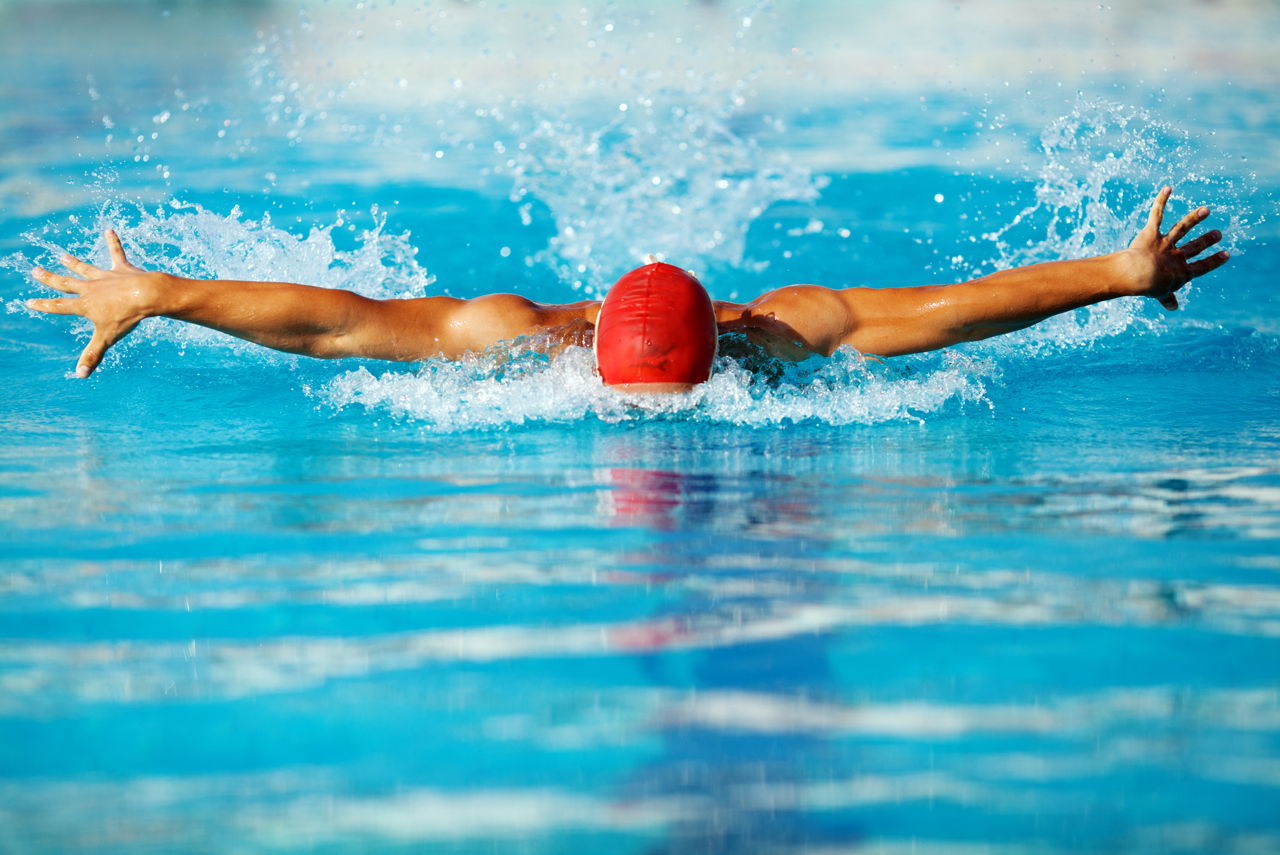Swimming as a sport is a sports discipline, the essence of which is to swim the maximum distance in the shortest time in accordance with generally accepted norms and standards. This sport includes the following varieties:
- actually swimming in various styles at speed in the indoor pool;
- jumping into the water from different heights;
- synchronized swimming;
- water polo.
Some refer to this discipline and swimming in open water, i.e. in water bodies – rivers, lakes, sea. The general category for everyone is called “water sports”. To come to professional sports, children come to the swimming section from the age of 6-7, and at the age of juniors they reach the first results in international competitions. Traditionally, both classes and competitions are held in indoor pools with a length of 25 or 50 meters and a depth of 3 meters.
Basic swimming styles
You can swim in different styles, the main differences between them are the nature of the movement of the arms and legs – i.e. technique.

There are three main styles:
- butterfly – a complex and slow, but at the same time energy-intensive and outwardly effective swimming style, during which the swimmer makes a simultaneous wave of his arms forward and a wave-like movement of the pelvis and hips;
- brass – symmetrical movements of the arms and legs, performed simultaneously; this style remotely resembles the movement of a frog in water and is a fairly effective and fast way to overcome distances by swimming;
- crawl (on the back and on the chest) – alternating strokes with hands with simultaneous movements of the legs up and down; crawl is the fastest way to move on the water surface, allowing the swimmer to not get tired for as long as possible.
How does swimming affect the athlete’s body?
Professional athletes are distinguished from ordinary people by an excellent figure and well-developed shoulder girdle and arms. Since almost all muscle groups are involved during swimming, professional swimmers never have excess body fat. Swimming perfectly develops muscles, and usually the upper body of swimmers is more massive due to the fact that the main emphasis during movement in the water is on the arms and shoulders.
Regular workouts perfectly develop the muscles of the back and chest, abs and legs. The chest, due to constant intensified inhalations and exhalations, also intensively develops and increases in volume. While moving in water, the whole body is intensively saturated with oxygen, due to which a constantly high metabolic rate is maintained.
What should you pay attention to while swimming?
A vulnerable spot for many swimmers is the ears and eyes. The ears are especially often affected by the negative effects of water, which is why athletes often suffer from otitis media. Therefore, for many, the rational solution is the use of special earplugs that block water access to the auditory canal. Glasses with a special polyurethane or silicone seal protect the eyes from the effects of chlorinated water.
When sending your child to the swimming section, take care of the necessary equipment to avoid problems in the future.

Swimming rules
Swimming competitions are held in pools with a length of 25 m (“short water”) and 50 m (“long water”). Major competitions such as the World Championships and the Olympic Games are held in 50m pools. The width of the lane is 2.5 m. Contrasting dark lines are applied at the bottom of the pool (in the center of each lane), which help the swimmer maintain the exact direction of movement. When swimming on the back, athletes are guided by special direction indicators – a rope with flags, which is stretched on both sides of the pool.
The most convenient is the central track (since there are usually 8 of them, then 4). It is occupied by the swimmer who showed the best time, the athlete who showed the second time is located to the left of the leader, the third is on the track to the right, and so on. The rules prohibit swimmers from “leaning” on the markings and swimming into someone else’s lane.
In swimming breaststroke, butterfly and freestyle, athletes start from the starting position from a special starting pedestal. In this case, the athlete’s arms should be extended forward and down, or laid back. It is also allowed to capture the starting pedestal from the front and from the sides. In backstroke competitions, the start is taken from the water. At the same time, athletes hold on to the handrails of the starting table, facing it, and at the same time rest their feet on the wall of the pool below the water level. Start is made on a starter shot.
In all types of the program, the athlete must touch the wall of the pool when turning. Freestyle and backstroke swimmers can touch the wall with any part of their body, so they use a somersault, kicking off the wall with their feet. When swimming breaststroke and butterfly, the swimmer must necessarily touch the wall with his hands, so the “pendulum” turn is used here.
